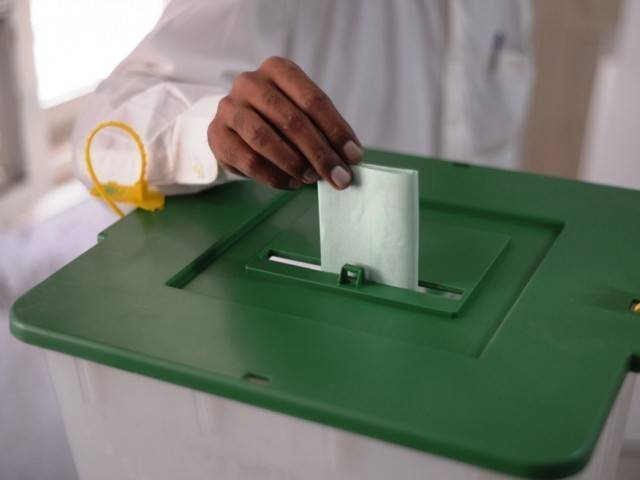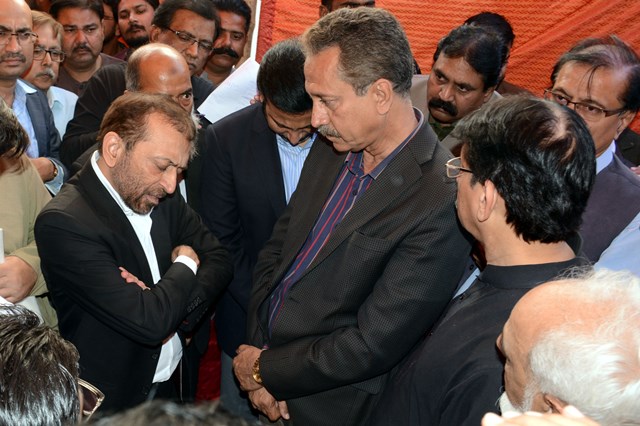
There is the media of course. It blares non-stop across the length and breadth of this electoral land. A river of information, images and opinion gushes out from screens and floods the minds of citizens on an hourly basis. But does the media have the capability to sway an election?
There is the establishment of course. It does not speak directly to the voters. It does not declare its political preferences. It does not anoint anyone through any overt action or gesture. And yet it influences thoughts by subtle use of less subtle proxies in constituencies and newsrooms. But does the establishment have the capability to sway an election?
There is the political leadership of course. It speaks non-stop across the length and breadth of this electoral land. It peddles its partisan narrative with all the force at its command — on the ground and on the air. But does the political leadership have the capability to sway an election based solely on its words and deeds?
The hard reality of issues, it seems, can withstand the gentle breeze of perception. Or can it?
The making of the mega-narrative in an election year is a complex process. Reverse engineer the phenomenon and it will break down into dozens of components each bearing the cross of its own complexity. Assemble it back into a whole and it snarls up like a fire-breathing dragon ready to devour the doubts of a doubting electorate.
And yet what is this mega-narrative but perception. It is a perception formed by stitching together a series of selective realities in a certain order. The reality of perception then can often overpower reality itself.
Like the resurgence of Nawaz Sharif.
Is he really rising like a phoenix after having been declared politically dead as a result of judicial decapitation six months ago or is it a mere perception growing larger by the day? There are no scientific surveys, there are no professional polls and there are no other certifiable methods to verify whether Sharif is actually gaining or losing in numbers. We don’t even know if a majority of the electorate feels that he clawing his way out of the political and legal pit he found himself on the day of his disqualification. And yet a perception is being built over some fragments of reality.
What are these fragments?
It is a fact that he is drawing crowds in rallies. But this fact is a result of smart politicking. He is holding jalsas in locations carefully selected for their political relevance. He is holding them regularly which means he is retaining high visibility on television, which in turn means he continues to generate a steady buzz among the electorate. This barrage of televised jalsas is also keeping his MNAs on their toes. Many of them are key electables. To arrange a successful jalsa for Nawaz Sharif requires them to use all the resources at their disposal. This means they have to galvanise their local network, charge up their councilors, coordinate with the local police and administration, call in overdue favours and plough in lots of cold cash in logistics, etc. All this is done to please the boss in order to get his approval (and development funds) for the coming elections. The sum total of the exercise is that electables and their constituencies are charged up and the Sharif brand gains traction on the ground.
A perception begins to shape up. The electable MNA perceives that Nawaz Sharif is confident and battle-ready so he will think twice before switching to another party. The voter at the jalsa site sees the big crowd, feels the big crowd, hears the belligerent Sharif and his combative daughter and perceives the PML-N still commands a serious presence in this constituency. The viewer on TV across Pakistan sees the blanket coverage of the charged-up jalsa peppered with crowd shots through multiple cameras and drones and perceives that Sharif must still be quite popular with the voters.
Once the initial perception has raised its head, it begins to draw attention to itself. Someone writes on it thereby making it part of the mainstream discourse. Then someone else picks it up as a topic for a show. Even if there is an opposing opinion being presented by the Opposition people, the fact that it is a topic by itself means that it has found traction and hence germinates a new twist in the conversations that happen every day across the country. In a subtle way, the question: “Is Sharif finished?” is replaced with: “Is Sharif making a comeback?”
Perception is now influencing reality.
The reality is also that Sharif is lashing away at the judiciary without any serious cost to himself. He chose a soft target. What else can the judges do except throw him in jail for contempt. That would in fact turbo-charge his politics. So oblivious of any retaliation he hammers away at the judges day in and day out — and a perception begins to shape up again: If he can get away with bludgeoning one part of the Establishment, then the other part might not be out to get him. Does this mean, people wonder, if he is still ‘kosher’ from the perspective of the establishment? And if that be so the ‘cards’ cannot be loaded against him to an extent that he becomes a losing option for his party, his fence-sitting candidates and their voters. The perception builds that he is still in the game and still very much in control.
What fragments of reality could conjure up a counter-perception? 1) Key electables break away from PML-N and join the PTI; 2) Sharif is convicted and the party fragments between Nawaz and Shehbaz camps; 3) Some new Panama-type scandal erupts and engulfs Sharif.
The key failing for the opposition — and especially the PTI — since the ouster of Sharif has been the inability to create a perception that Sharifs are finished and the Establishment will never let them return. The reality was the same: Sharif had been ousted. Khan could have built a perception around this reality to favour him. He did not. Sharif did.
Perceptions will not by themselves help Sharif or Imran win the elections, But perceptions directly influence reality-based factors that have a bearing on the elections. It is a widely accepted fact that every constituency has its own dynamics and the nucleus of these dynamics is the candidate. The strength of the candidate is overridden only when a leader or the party he leads can trigger a wave that can sweep away local factors in favour of the party vote. If such a ‘wave’ or a ‘tsunami’ sweeps across the land in this year’s elections then all bets and calculations are off. But if it does not, and the battle is fought constituency by constituency, then the power of perception will play a key role in defining the reality of the result.
Underestimate this power at your own peril.
Published in The Express Tribune, February 11th, 2018.
Like Opinion & Editorial on Facebook, follow @ETOpEd on Twitter to receive all updates on all our daily pieces.

















1713853507-0/MalalaHilary-(2)1713853507-0-270x192.webp)




















COMMENTS (1)
Comments are moderated and generally will be posted if they are on-topic and not abusive.
For more information, please see our Comments FAQ